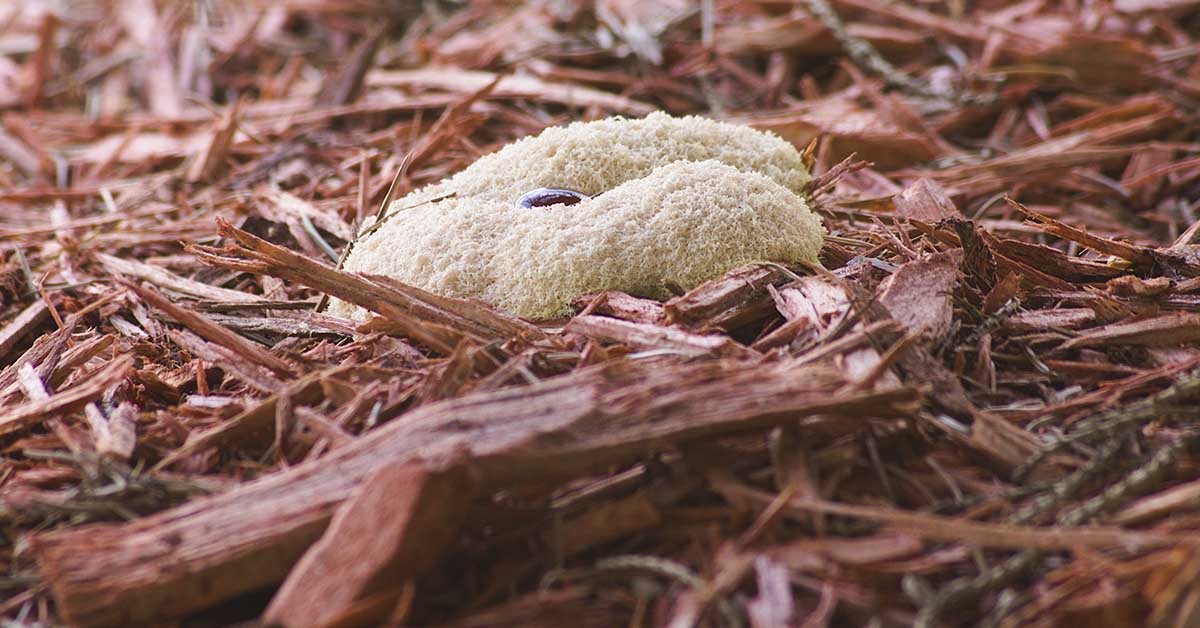The majority of people have come across a bizarre spongy substance in their garden. Although it’s quite satisfying to poke with a stick, it turns out the substance is actually called slime mold and is surprisingly beneficial to your garden.
Surprisingly Beneficial Substance

Slime mold, a white spore sponge-like substance, is commonly found in gardens or anywhere that uses mulch. Interestingly, there are 13 types of mulch, and they can be made using organic or inorganic materials. For example, some mulches use wood chips, grass, straw, or leaves. In contrast, others are made of cocoa bean shells, hazelnut shells, pine needles, or mushrooms. It’s important to research which products are best for your home because some, like the cocoa bean shells, may be harmful to pets. Inorganic materials used for mulch include seashells, stones, and even recycled glass.
Moreover, slime mold isn’t categorized as either plant or animal matter and is on a mission to “decompose organic matter.” But it is “one of around 500 species of primitive organisms containing true nuclei and resembling both protozoan protists and fungi,” according to Britannica. It spreads through individual spores and can be found worldwide, particularly in dark, moist, and cool conditions.
Read More: How to Deal With Snails in Your House and Garden
Slime Mold Grows in Abundance
Outside of gardens, it’s not uncommon to find slime mold in places like the forest. It is created with the help of yeast and bacteria found in the air, as well as fungi. Similarly, the three factors together are also a main contributor in how they benefit a garden. It’s non-toxic, which may feel counterintuitive regarding mold, but it has been proven to help return vital nutrients to the soil. Moreover, the organism may be successful in “eating” pathogens and bacteria that might cause harm to flowers and crops.
Slime mold can be in various colors, most commonly ranging from orange to yellow. Incredibly, this little organism can grow to be 2 feet in diameter, making itself at home on “moist” or “rotting” vegetation. While it’s not harmful to gardens, slime mold isn’t great to look at. If this is problematic, it’s best to bury it into the mulch, ensuring those essential vitamins don’t go to waste.
Should you decide to get rid of it, sources advise against using chemicals because not many can kill slime mold. The easiest way to eliminate the organism is to let the mulch dry out or scrape it away using a rake. However, there is no guarantee that it won’t grow back. When opting for chemical treatments, things specified as fungicides will be the most successful.
Hiring Help
Moreover, recruiting professional help is another way to ensure the most success when attempting to remove slime mold, as they often have the experience and equipment necessary to get the job done.
Slime mold isn’t particularly pretty to look at, meaning people may seriously desire to rid their garden of it. However, it provides numerous benefits to plants and crops. Therefore, consider giving it a chance to pour some extra love into the garden before you do away with it altogether, or at least try.
Read More: Please Stop Eating The ‘Clean’ Bit Of Moldy Bread, It’s Not Safe
Sources
- “Slime Mold.” Britannica
- “Slime Mold on Grass: Causes, Prevention, and Treatment.” Lawn Doctor
- “13 Types of Mulch—and How to Choose the Right One for Your Yard.” Martha Stewart. Ann Hinga Klein August 17, 2023.
- “What You Need to Know About the White Stuff on Your Mulch.” Taste of Home. Melany Love November 17, 2023.
- “What Is Slime Mold: Slime Mold Facts and Control in The Garden.” Gardening Know How. Bonnie L. Grant June 22, 2021.

